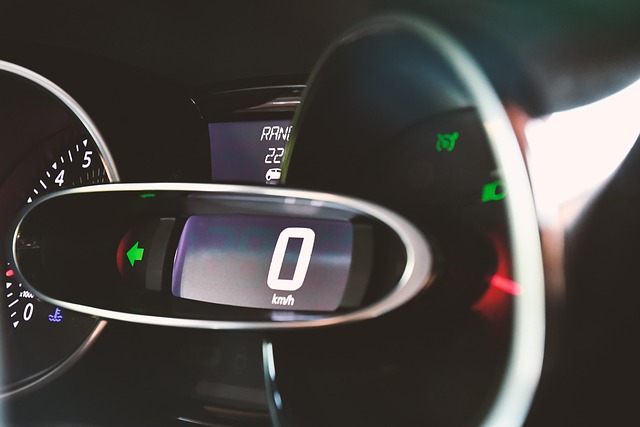Automatic internal linking tools streamline WordPress SEO and content strategy by suggesting relevant links, improving site structure, and boosting user experience. To choose the right tool, look for seamless integration, intuitive interfaces, optimization features, and analytics dashboards. After integrating, customize settings, analyze content, and regularly optimize for maximum benefits. By following tutorials and tips, websites can strengthen their online presence, enhancing SEO rankings and user engagement, as proven by successful implementations on news sites, e-commerce platforms, and informational blogs.
In the vast landscape of WordPress, managing internal links across multiple sites can be a daunting task. This is where an automatic internal linking tool steps in as a game-changer. Designed for users seeking streamlined solutions, these tools simplify the process, enhancing SEO and user engagement. This article explores the challenges of internal linking, highlights the benefits of automation, guides you through key features, integration, real-world use cases, and helps choose the right automatic internal linking tool to elevate your WordPress strategy.
- Understanding the Challenge of Internal Linking
- The Benefits of an Automatic Internal Linking Tool
- Key Features to Look for in a WordPress Solution
- How to Integrate the Tool with Existing WordPress Sites
- Real-World Use Cases and Success Stories
- Choosing the Right Automatic Internal Linking Software for Your Needs
Understanding the Challenge of Internal Linking

Internal linking is a critical aspect of search engine optimization (SEO) and content strategy for WordPress sites, but managing it across multiple pages and websites can be a complex task. This challenge stems from the sheer volume of links that need to be carefully crafted and placed within content to guide users and search engines through relevant information. Without proper internal linking, users might struggle to navigate a website effectively, and search engines may fail to understand the context and hierarchy of content, impacting overall site visibility in search results.
An automatic internal linking tool can significantly streamline this process by suggesting strategic links based on content similarity and relevance. This not only saves time for content creators but also ensures a more effective internal linking strategy. An automatic internal linking tutorial or optimization guide can help WordPress users understand how to utilize these tools, enabling them to create an optimized site structure that enhances user experience and boosts SEO performance.
The Benefits of an Automatic Internal Linking Tool

An automatic internal linking tool is a game-changer for WordPress site managers, offering a seamless and efficient way to optimize content connectivity. This software solution streamlines the process of creating internal links across multiple sites, which is particularly beneficial for large-scale WordPress deployments. By automating this task, content creators can save significant time and effort, allowing them to focus on producing high-quality material.
One of the key advantages is its impact on SEO (automatic internal linking tips). Strategic internal linking enhances page authority and improves site navigation, enabling search engines to understand the site’s structure better. This results in improved indexing and increased visibility for all pages connected through the automatic internal linking tutorial. Additionally, it fosters a user-friendly experience by providing quick access to related content, encouraging users to explore more of the website.
Key Features to Look for in a WordPress Solution

When choosing a WordPress solution for automatic internal linking, look out for tools that offer seamless integration with your existing sites and easy-to-use interfaces. The best options will provide automatic internal linking optimization by automatically suggesting relevant links based on content similarity, keyword relevance, and user behavior — saving you significant time and effort.
Beyond optimization, consider features like advanced filtering options to tailor link suggestions to specific content types or categories, and analytics dashboards to track the effectiveness of your internal linking strategy. Following automatic internal linking tips from reputable sources can help you fine-tune these tools for maximum performance, while an automatic internal linking tutorial (if available) can guide you through the setup process and help you unlock the full potential of the software.
How to Integrate the Tool with Existing WordPress Sites

Integrating an automatic internal linking tool with your existing WordPress sites is a straightforward process designed to save time and effort while enhancing search engine optimization (SEO). Start by choosing a reputable plugin that offers seamless compatibility with your current WordPress setup. Many top-rated plugins provide detailed installation guides, ensuring a smooth onboarding experience. During the setup, you’ll be prompted to connect your database, allowing the tool to analyze your site’s content and generate internal links automatically.
Once installed, leverage automatic internal linking tips such as configuring default settings tailored to your content strategy. This initial setup involves selecting relevant categories, tags, and custom post types to be considered for internal linking. Subsequently, fine-tune your automatic internal linking strategy by using advanced features like context-aware linking, where the tool intelligently places links based on the surrounding text. Regularly review and optimize these settings to align with your website’s unique content structure and SEO goals, thereby maximizing the benefits of automatic internal linking SEO.
Real-World Use Cases and Success Stories

In today’s digital landscape, where content is king, efficient content management is paramount. This is especially true for large-scale websites and blogs that rely on WordPress as their backbone. An automatic internal linking tool emerges as a game-changer in this space, offering businesses an effective solution to streamline their content strategy. Real-world use cases demonstrate the immense value of these tools; for instance, a news website utilized an automated link builder to seamlessly interlink articles based on topics and keywords, enhancing user experience and boosting SEO. This success story highlights how such tools can significantly improve site navigation and search engine rankings.
The automatic internal linking tutorial reveals a straightforward process: identify relevant content, generate links, and optimize for better accessibility and indexing by search engines. Tips include analyzing existing content to identify related posts and using specific anchor text to maintain a natural reading flow. By implementing these automatic internal linking tips, websites can achieve a more robust online presence, ensuring that every page contributes to the overall SEO strategy. This approach has proven successful for various businesses, from e-commerce sites to informational blogs, all aiming to maximize their online reach.
Choosing the Right Automatic Internal Linking Software for Your Needs

When selecting an automatic internal linking tool for your WordPress sites, it’s crucial to align the software with your specific needs. Different tools offer varying features such as auto-linking creation, contextual anchor text optimization, and SEO performance tracking. Consider the size of your website and content management requirements. For instance, a small blog might benefit from a simpler tool focusing on automatic linking generation, while an e-commerce site with complex product categories would require more advanced functionalities like smart link placement and dynamic anchor text variation.
An ideal automatic internal linking tutorial should guide you through setup, configuration, and optimization. Incorporating best practices for automatic internal linking tips can enhance SEO performance significantly. By ensuring links are contextually relevant and strategically placed, the tool not only improves user experience but also signals search engines about your site’s content hierarchy, boosting your website’s visibility in search results. Remember, choosing the right software is just the first step; regular monitoring and adjustments based on analytics data will help you maximize the benefits of automatic internal linking SEO for your WordPress sites.
